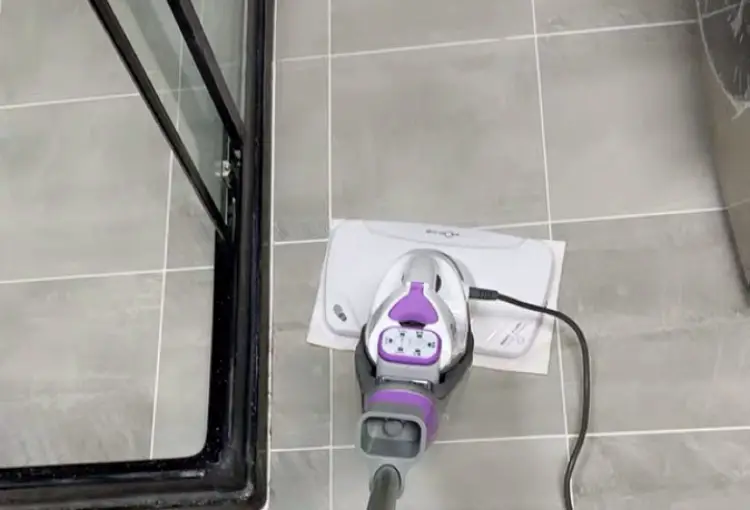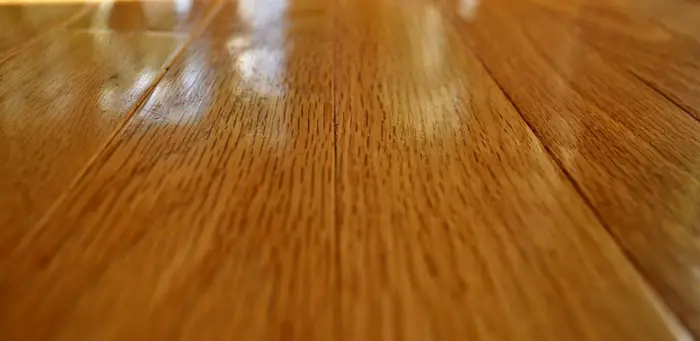Grout is that mortar or pastes that holds the tiles together, and they are subjected to almost everything we use at home, from sunblocks and night creams to baby food and pet dander. Name it, and you will probably find its particles stuck in between the tiles. Sometimes the grout may not be sealed properly, leading to a lot of buildups but even those that are perfectly sealed may connect gunk and bacteria over the years.
Today, we will address a common query of house owners that have tile flooring ‘does a steam mop clean grout’. The answer is slightly tricky because it cannot be a complete ‘No’ or an absolute ‘Yes’. The steam mops are often considered as an effective tool for cleaning grout, but only when the device is capable of heating the water over 200 F. Low-cost steam mops that can’t produce high-intensity steam fail to have a major impact on the grout.
Furthermore, the cleaning device must come with special nozzles/ attachments that are specially designed to help with grout cleaning. The attachments help in scrubbing the grout while they are treated with a jet of hot steam. This also creates a nasty mixture of grime and water that must be rinsed well or mopped away after you are done with steam cleaning.
5 Steps To Clean Grout Using A Steam Mop
If you have recently bought a steam mop or are planning to buy one, you may want to know the right way of using it to get rid of the debris and germs stuck in the grout. First, you need to ensure that you use a steam cleaner that can produce a blast of high-intensity steam (take a look at the options I have mentioned below. Now follow these steps to clean the grout without the use of any harmful chemicals.
#1. Clean the area thoroughly
The first step is to clean the entire area where you wish to steam clean to remove excess gunk, loose debris, grit, and dirt that can hamper your cleaning efforts. If you wish to clean the grout in bathroom tiles, you will need to get rid of the soap scum or dirt that can clog the cleaning brush. Sweep and damp mop the floor tiles before using a steam mop to clean grout. For walls, you may use a damp sponge and mild detergent to get desired results.
# 2. Set up the device with suitable attachments
The steam cleaners come with a reservoir or tank that holds water, so fill it with water and then turn on the device. Set it to produce steam as mentioned in the product manual. For most models, it typically takes just a few minutes to produce steam. Attach the hose to the device as directed by the manufacturer and select a cleaning attachment that fits the size of grout and tiles. I would suggest that you start with a nylon brush that works on almost all types of grouts without damaging the tiles. Even if you concentrate the steam on the grout and then mop away the gunk, this should be enough to clean and disinfect the area.
#3. Start steaming and scrubbing simultaneously
Turn on your device with the recommended intensity of steam. Use the brush to scrub the grout area vigorously with back and forth motions. Work only at one specific area at a time until it becomes clean and then move to the next section. When working on the grout lines on walls, work from top to bottom so that the dirt and debris run down towards the uncleaned part.
#4. Rinse the cleaned area and repeat
Divide the entire surface into smaller sections and stop scrubbing periodically after you complete one part to rinse with a sponge or mop. This step is essential because if left uncleaned, it can settle back into the grout and dry up. After you clean one section, refill the tank and continue the above steps for the next section until you cover the entire area to be cleaned.
#5. Seal the cleaned grout lines
You may use a steam cleaner on both sealed and unsealed grout, without damaging the sealer. After you have cleaned the grout and restored it back to its original appearance, use a high-quality grout sealer to re-seal the gaps. There are two types of sealers available in the market – topical and penetrating. Both have their advantages and downsides so weigh your options carefully to buy the best sealant.
Top 3 Steam Mops That Can Clean Grout
Grout is that substance that is forced to fill the gaps between the tiles and stabilize the surface to make it smooth and even. The grout is comparatively lower than the tiles, and it attracts mineral deposits, gunk, and debris that harden over time. You need a powerful steam cleaner that can loosen the stubborn buildups and restore the shine.
1. BISSELL Crosswave Pet Pro All in One
This is one of my favorites (see Amazon) because you can vacuum clean and mop the grout at the same time. As mentioned above, it’s not a good idea to use a wet mop over a dirty grout, so vacuuming removes any dirt and debris stuck inside the gap. The high-intensity steam cleans and disinfects the grout lines, while the brushes scrub the area to dislodge any stubborn dirt. The steam mop is lightweight hence it’s easier to carry it from one room to another. Although slightly expensive, this amazing product by BISSELL liberates you from having to use two devices for cleaning. If you have pets at home, this is a must-have for quick cleanups without any hassles.
2. PurSteam Steam Mop Cleaner
This 10-in-1 steam mop from the house of PurSteam makes it easier to clean quickly without the use of harsh chemicals. It takes just 30 minutes to form super intense steam that is capable of killing 99.9% of germs. Just the steam is enough to unplug the gunk, debris, and germs stuck in the grout area. It comes with a tank that has good water capacity, hence you get a cleaning time of 20-25 minutes at the lowest setting. It comes with various attachments such as a nylon brush, nozzles, squeegee, and mop cleaning pads. The steam mop is also backed by a two year warranty and free replacement policy.
3. LIGHT ‘N’ EASY All-In-One Steam Mop
This is another amazing all-in-one steam mop that can be detached to become a handheld unit. It can deep clean the tiles and grout in the bathroom and kitchen. There are high, medium and low settings to help you clean the different types of surfaces. It has the capacity to heat water up to 110 degrees C and produce intense steam to remove the sticky mess, bacteria, and stains in the grout. The product comes with one-year quality assurance and a free replacement policy. It works great for houses that have kids and pet. Their customer service is available throughout the year, 24 hours a day.
Reasons Why Grout Get Damaged
It’s a pity that some people accuse steam mops of grouts getting damaged without investigating the real reason behind it. Thus, steam mops get a bad rap without any truth in the accusation. There are several other reasons that are responsible for grouts going bad and here are some of them:
#Insufficient filling in the gaps
This is a common mistake people make to save some money, but they end up paying heavily for skimping on the use of grout mixture. If you use an inadequate amount of grout mixture for filling the gaps between tiles, they will not be able to sustain for a long time and end up getting cracked.
#Excess saturation
Some builders often saturate the grout with more water than necessary and this results in weakening the adhesive nature. Try to use a pre-mixed grout for best results and avoid adding extra water to it. This will help the grouts sustain for a long period of time.
#Unsealed grout
The grout lines need to be sealed properly because they are porous in nature and liquid can easily seep through them. When the grout remains unsealed, exposure to moisture and dirt can gradually weaken the binding capacity. On the other hand, sealed grout can hold itself for some time even after it is cracked.
Signs That Indicate You Need To Replace Grout
Now that you know that answer to ‘does a steam mop clean grout’, I am sure you will able to take better care of your floor. We often clean the tiles but forget all that nasty gunk and bacteria residing in the grout lines. While cleaning with a steam mop can help you keep them sanitized and good for long, everything has an expiry date. Here are a few signs that indicate your grout is worn out and need to be replaced.
#It cracks with time
The first most important signs you will notice as the grout starts getting worn out are cracks on the seal, and if not taken care of immediately, they will start falling off after some time. When the cracks first appear, it’s a clear sign that the grout needs to be replaced.
#Holes in the filling
If you notice holes in the grout, it’s a serious concern that should not be ignored. Even the smallest of holes can allow moisture, dirt, and germs to seep in and damage the floor. You should avoid using a steam mop on grout that has holes.
#Mold and mildew growth
Stains are normal, but mold and mildew growth are not. The later can be detrimental to the longevity of the grout. When you see signs of mildew or mold, it’s a signal that the grout needs to be replaced at the earliest.
Related Questions
Can a steam mop clean mildew?
If you steam clean the grout when there are early signs of mildew, you can get rid of them completely with pressurized vapor. It softens the stains and mildew to remove them easily with a quick wash. Thus, regular cleaning of grout can prevent the growth of mildew.
How often should you clean the grout?
To ensure that the grout lines stay neat and sanitized, you should clean them on a daily basis. Neglecting them and constant exposure to dirt, liquid spills, and food droppings can give them a filthy appearance. Furthermore, they may become the breeding ground for germs, gunk, and debris.
Can I use vinegar for cleaning grout?
Yes, you can add vinegar to the water tank of your steam mop in the ratio of 50:50 to effectively dislodge the dried stains, nasty debris and also sanitize the grout lines. I would recommend that you use white vinegar or apple cider vinegar for best results.
See Also:
6 Best Mops For Dog Hair On Hardwood
Can I Use Tap Water In My Steam Mop?
Does A Steam Mop Clean Grout?


